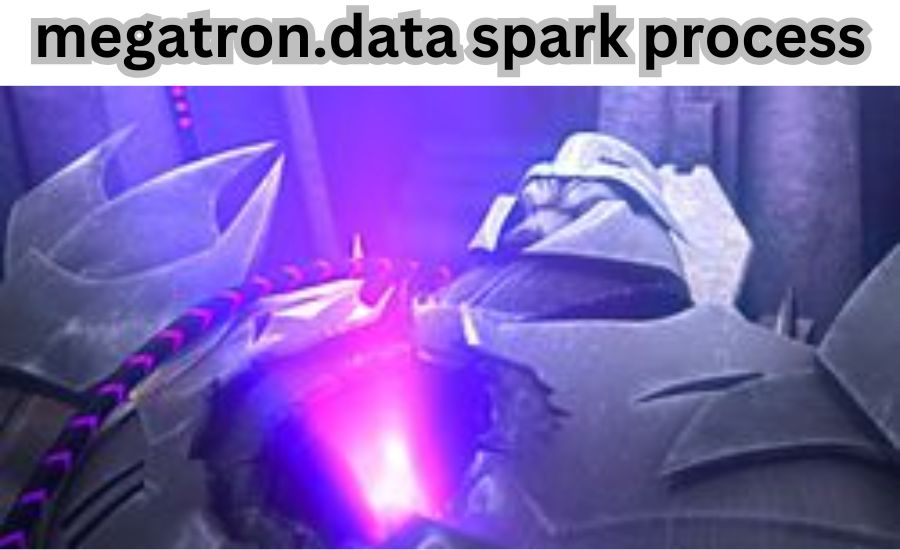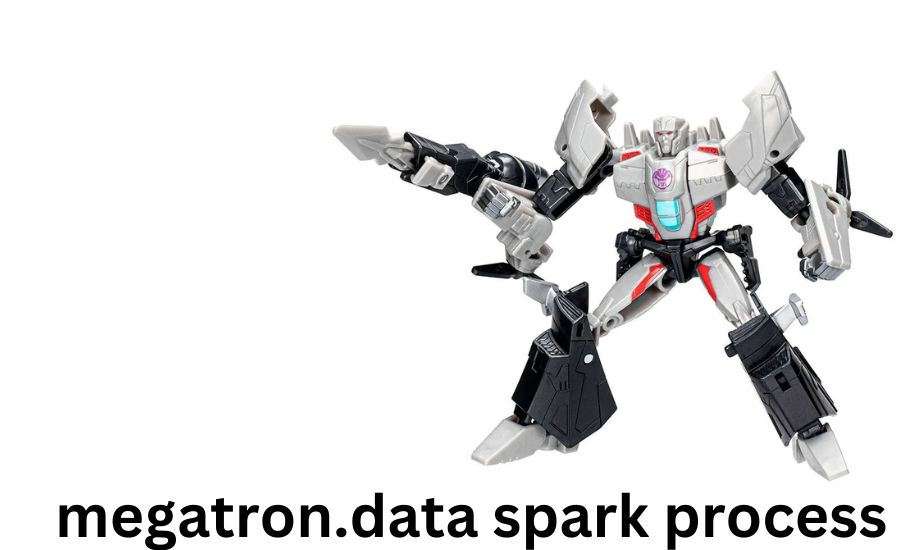The megatron.data spark process is a game-changing technique in the field of artificial intelligence, particularly for training large language models. By leveraging the power of distributed data processing, this innovative approach allows researchers and developers to manage vast datasets more efficiently. As AI models grow in complexity and size, the ability to handle data effectively becomes crucial, and the Megatron.Data framework offers a robust solution.
In this blog post, we will explore the intricacies of the megatron.data spark process, its components, and how it integrates with popular frameworks to enhance model training. Whether you are a seasoned AI developer or just starting, understanding this process will provide you with valuable insights into optimizing your AI training workflows and achieving superior results.
Understanding the Megatron.Data Spark Process: A Comprehensive Overview
The megatron.data spark process is an innovative approach that transforms how we handle large amounts of data in artificial intelligence (AI). This process allows researchers and developers to efficiently manage and process data, which is crucial for training large language models. By using Spark, a fast and powerful data processing engine, the Megatron.Data framework makes it easier to work with vast datasets.
One of the key features of the megatron.data spark process is its ability to ingest data from multiple sources simultaneously. Instead of waiting for data from one source to finish loading, this process can pull data from many sources at the same time. This capability is especially important as AI models require extensive amounts of data to learn effectively.
Furthermore, the megatron.data spark process ensures that the data is clean and well-structured before it reaches the AI model. By organizing data in this way, developers can improve the model’s performance. A well-trained model that uses high-quality data can yield more accurate results and insights, which is the ultimate goal in AI development.
In summary, the megatron.data spark process plays a vital role in making data handling more efficient and effective. It helps researchers and developers focus on creating better AI solutions rather than struggling with data management.
Why the Megatron.Data Spark Process is Essential for AI Development
The megatron.data spark process is essential for AI development for several reasons. First and foremost, it addresses the challenges associated with managing large datasets. As AI models continue to grow in complexity and size, the ability to handle data efficiently becomes increasingly critical. The Megatron.Data framework provides a solution by simplifying how data is processed and accessed.
One significant advantage of the megatron.data spark process is its scalability. Traditional data processing methods can slow down as datasets become larger, leading to bottlenecks in the training process. However, this innovative approach allows developers to work with larger datasets without losing speed. This scalability ensures that researchers can focus on training their models rather than getting bogged down by data processing delays.
Moreover, the megatron.data spark process is highly flexible. It can handle various data types and sources, allowing developers to experiment with different datasets. This adaptability is crucial for AI research, where finding the right data can make a significant difference in the model’s performance. By enabling the use of diverse data types, the process opens up new possibilities for innovation in AI.
In conclusion, the megatron.data spark process is a cornerstone of modern AI development. It helps streamline data management, enhances scalability, and provides the flexibility needed to create powerful AI models.
Key Components of the Megatron.Data Spark Process Explained
- Data Ingestion:
- Simultaneous collection from multiple sources.
- Supports various data formats.
- Data Processing:
- Cleans and organizes data for quality.
- Automates validation checks.
- Data Storage:
- Optimized for quick data retrieval.
- Reduces latency for easy access.
- Parallel Processing:
- Multiple tasks run simultaneously.
- Increases speed and efficiency.
- Scalability:
- Handles growing data seamlessly.
- Adapts to increasing data needs.
- Automation:
- Automates routine data tasks.
- Reduces manual effort.
- Real-Time Processing:
- Processes data as it is ingested.
- Supports immediate data updates.
How to Implement the Megatron.Data Spark Process in Your AI Projects
Implementing the megatron.data spark process in your AI projects can significantly enhance your data management capabilities. The first step is to set up your working environment. This involves installing necessary software, including Apache Spark and the Megatron.Data framework. Make sure your system meets the requirements for running these tools effectively.
After setting up, the next step is to define your data sources. Decide where you will gather your data from, such as databases, online repositories, or APIs. This is a crucial step because the quality and variety of your data will directly impact your AI model’s performance. The megatron.data spark process allows you to connect to multiple data sources, making data ingestion faster and more efficient.
Once your data sources are established, you can begin the data ingestion process. Utilize the capabilities of the megatron.data spark process to pull data from multiple sources simultaneously. Monitor this process closely to ensure that all data is collected accurately. If issues arise, addressing them early can prevent complications later on.
Following ingestion, focus on processing your data. Use the features of the megatron.data spark process to clean and organize your data effectively. Properly processed data is vital for training successful AI models. Finally, ensure that your data is stored in an organized manner to facilitate quick access during model training.
You May Also Like: Sf-Symbole-Active-Record
Megatron.Data Spark Process

The megatron.data spark process has numerous real-world applications that showcase its power in handling data for artificial intelligence. One notable application is in natural language processing (NLP). AI models that understand and generate human language rely heavily on vast datasets for training. The megatron.data spark process enables these models to efficiently process large amounts of text data from various sources, enhancing their ability to understand language nuances.
Another area where this process shines is in image recognition. In fields such as healthcare, AI models analyze images to assist in diagnosis. The megatron.data spark process allows developers to manage large image datasets effectively. By ensuring that data is ingested and processed quickly, AI models can learn from high-quality image data, leading to better accuracy in recognizing patterns and features.
Furthermore, the megatron.data spark process is also used in recommendation systems. Companies that provide personalized content rely on analyzing user data to make recommendations. By implementing this process, businesses can handle user data more efficiently, allowing for real-time updates and improved recommendations based on user preferences.
Optimizing Data Handling with the Megatron.Data Spark Process
Optimizing data handling is essential for successful AI projects, and the megatron.data spark process offers several strategies to achieve this. One key strategy is parallel processing. By utilizing the capabilities of Spark, the Megatron.Data framework can process data in parallel, allowing for faster data ingestion and analysis. This approach reduces the time spent waiting for data to be prepared for model training.
Another effective optimization technique is data partitioning. The megatron.data spark process allows developers to partition their data into smaller, manageable chunks. This not only improves processing speed but also enhances the model’s ability to learn from diverse data samples. By exposing the model to a wide range of data, developers can improve its performance and accuracy.
Additionally, caching is an important aspect of optimizing data handling. By caching frequently accessed data, the megatron.data spark process reduces the need to repeatedly read data from its original source. This results in quicker access to essential information, allowing for more efficient training and experimentation with AI models.
Challenges and Solutions in the Megatron.Data Spark Process
Despite its advantages, the megatron.data spark process also comes with challenges that developers must navigate. One common challenge is data quality. When ingesting data from multiple sources, there is a risk of including inaccurate or irrelevant information. This can negatively impact the performance of AI models. To address this issue, it is essential to implement thorough data validation checks during the ingestion process. By ensuring that only high-quality data is included, developers can improve their model’s accuracy.
Another challenge is resource management. The megatron.data spark process requires significant computational resources, especially when dealing with large datasets. Developers must ensure that their systems are equipped to handle the demands of the process. This can involve optimizing hardware configurations and utilizing cloud resources for additional processing power.
Lastly, understanding the complexities of distributed computing can be daunting for some users. The megatron.data spark process leverages distributed computing to enhance performance, but this can introduce complications. To overcome this challenge, developers should invest time in training and familiarizing themselves with the principles of distributed systems. Many resources and community forums are available to help users learn how to optimize their use of the process effectively.
Comparing the Megatron.Data Spark Process to Traditional Data Processing Techniques
| Feature | Megatron.Data Spark Process | Traditional Data Processing Techniques |
| Processing Method | Utilizes parallel processing for efficiency. | Often relies on single-threaded processing. |
| Scalability | Designed to scale seamlessly with growing datasets. | Struggles to scale with increasing data volume. |
| Data Ingestion | Allows simultaneous ingestion from multiple sources. | Ingestion is typically sequential from one source. |
| Data Processing Speed | High-speed processing due to distributed computing. | Slower processing due to linear execution. |
| Resource Management | Optimizes resource usage across multiple nodes. | May require significant manual resource allocation. |
| Data Quality Handling | Automated data cleaning and validation processes. | Data quality checks often done manually. |
| Flexibility | Supports various data types and formats. | Limited flexibility with data types. |
| Automation | Automates many tasks, reducing manual effort. | Requires more manual intervention for tasks. |
| Parallel Processing | Processes tasks in parallel, reducing delays. | Processes tasks one at a time, leading to delays. |
| Real-Time Data Handling | Capable of handling real-time data updates. | Not designed for real-time data handling. |
Future Trends: Evolving the Megatron.Data Spark Process for Advanced AI
As technology continues to advance, the megatron.data spark process is expected to evolve in several exciting ways. One future trend is the integration of machine learning and data processing. By combining these two areas, developers can create systems that not only manage data efficiently but also learn from it in real-time. This capability could lead to faster insights and more accurate predictions in various AI applications.
Another trend is the increasing use of cloud-based solutions. The demand for scalable data processing has led many organizations to shift to cloud infrastructure. The megatron.data spark process is likely to adapt to these changes by providing seamless integration with cloud platforms. This shift would allow developers to leverage the power of cloud computing for their data processing needs, ensuring flexibility and scalability.
Moreover, advancements in hardware technology, such as specialized AI chips, will enhance the performance of the megatron.data spark process. These new hardware solutions can provide faster processing speeds and better efficiency, allowing AI models to train more effectively on larger datasets.
The future of the megatron.data spark process looks promising, with trends focusing on machine learning integration, cloud-based solutions, and advancements in hardware technology. As these developments unfold, the process will continue to play a crucial role in the evolution of AI.
Conclusion
In conclusion, the megatron.data spark process is a transformative approach to managing data in artificial intelligence projects. Its ability to efficiently handle large datasets, combined with features like parallel processing and scalability, makes it an essential tool for developers and researchers. By implementing this process, teams can streamline their data handling, allowing them to focus on creating innovative AI solutions.
Understanding the various components and applications of the megatron.data spark process is key to unlocking its full potential. As technology continues to evolve, staying informed about the latest trends and best practices will help developers maximize their success. With its robust framework and capabilities, the Megatron.Data process is poised to drive advancements in AI and enhance the performance of language models and other applications.
Get More Information: Tristar-Ai-Junior-Software-Engineer-Salary
FAQs
Q: What is the Megatron.Data Spark Process?
A: The Megatron.Data Spark Process is an advanced framework designed for efficiently managing and processing large datasets in AI applications, utilizing parallel processing and distributed computing.
Q: How does the Megatron.Data Spark Process improve data ingestion?
A: It allows simultaneous ingestion from multiple data sources, speeding up the collection process and enhancing the overall efficiency of data handling.
Q: What are the benefits of using this process for data processing?
A: The process automates data cleaning and validation, ensuring high-quality data is organized effectively for training AI models.
Q: Can the Megatron.Data Spark Process handle real-time data?
A: Yes, it is capable of processing data as it is ingested, making it suitable for applications that require immediate data updates.
Q: Is the Megatron.Data Spark Process scalable?
A: Absolutely! It is designed to scale seamlessly, accommodating growing datasets without sacrificing performance.





